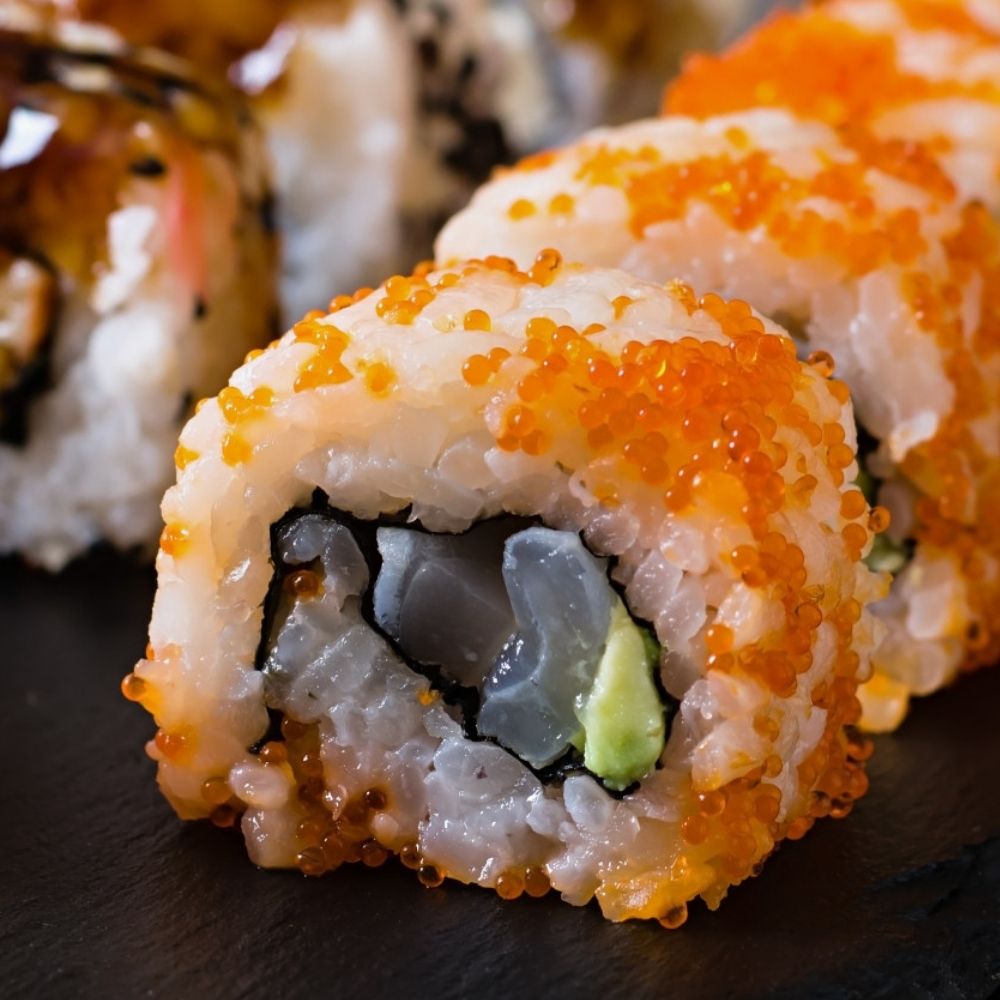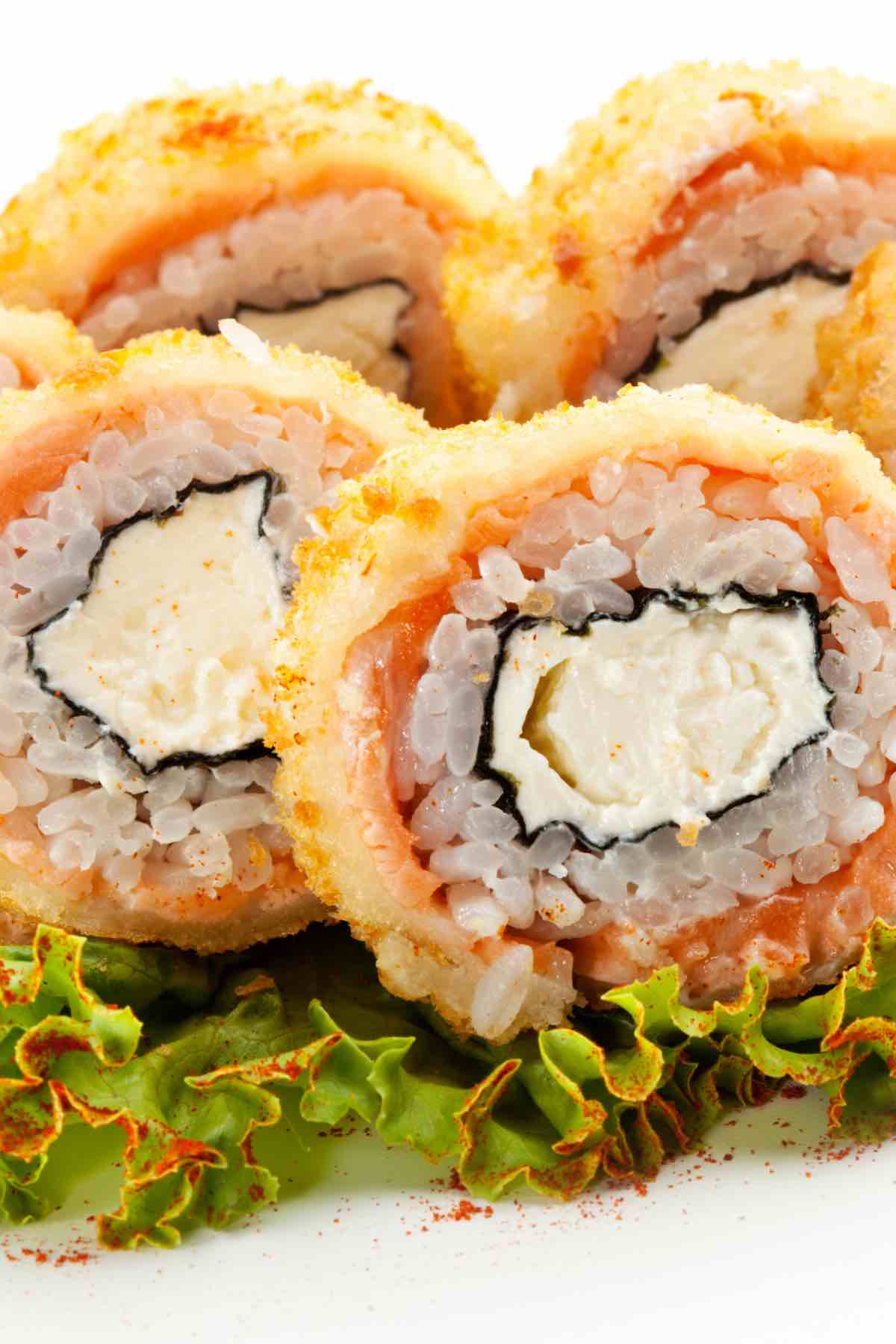Can sushi truly be cooked? The answer, surprisingly, unlocks a realm of culinary exploration far beyond the familiar territory of raw fish. This opens doors to diverse palates and dietary needs, proving sushis adaptability and enduring appeal.
Sushi, a culinary art form originating in Southeast Asia and refined in Japan, has journeyed across continents, embracing novel ingredients and techniques while retaining its core essence. The notion of cooked sushi challenges the prevailing perception that freshness equates solely to raw ingredients. This shift not only broadens sushis accessibility but also celebrates its incredible versatility, seamlessly integrating into modern lifestyles.
| Sushi: A Culinary Journey Beyond Raw Ingredients | |
|---|---|
| Origin: | Southeast Asia (Preservation of fish) |
| Evolution: | Transformed in Japan, incorporating fermented rice. Modern sushi emphasizes fresh ingredients. |
| Key Innovation: | Hanaya Yohei's introduction of nigiri sushi (1800s). |
| Popularity: | Gained popularity in Western cultures, with chefs experimenting with new techniques and ingredients. |
| Modern Adaptations: | Focus on cooked sushi catering to a diverse audience. |
| Versatility: | Diverse preparations, flavors, and presentation. |
| Reference: | SushiFAQ.com |
The history of sushi is a testament to human ingenuity and adaptation. Born from the necessity of preserving fish, the technique of packing fish with fermented rice evolved over centuries, eventually migrating from Southeast Asia to Japan. There, it transformed into the sophisticated dish we recognize today. Initially, the primary purpose of the rice was preservation; the fermentation process, which could last for months, effectively kept the fish edible. Over time, this process was refined, the fermentation period shortened, and fresh ingredients, including both fish and other elements, took center stage.
- Male Salt Trick In Shower
- Hard Times At The El Royale
- %D0%BB%D0%BE%D0%B8%D1%81 %D0%BA%D0%BB%D0%B0%D1%80%D0%BA
- Is Chris Cuomo Still Married
- Tom Jones Son
The 1800s saw a pivotal shift. Hanaya Yohei, a chef in Edo (modern-day Tokyo), revolutionized sushi with nigiri, presenting vinegared rice topped with fresh fish. This innovation dramatically increased sushi's appeal and accessibility, marking a significant moment in culinary history. While raw fish remains a hallmark of many sushi preparations, the rise of cooked sushi has further expanded the possibilities, especially within Western culinary traditions.
Today, the world of sushi thrives on experimentation and innovation. Chefs worldwide push boundaries, incorporating diverse cooking methods, creative flavor combinations, and striking presentations. This dynamism proves sushi's capacity to transcend its origins, continually evolving while still honoring its rich heritage.
Beyond the traditional raw preparations lies a vibrant landscape of cooked sushi. These variations are a boon for those who prefer cooked foods or have specific dietary requirements. Here are some of the most popular examples, each offering a unique culinary experience:
Tempura Rolls
Tempura rolls are a delightful fusion of textures, with crispy fried shrimp or vegetables as the star. The tempura is cooked to a golden crispness before being combined with sushi rice and seaweed, creating a satisfying crunch.
Teriyaki Rolls
Teriyaki rolls offer a symphony of savory flavors, featuring tender chicken or beef marinated in a sweet soy sauce glaze. The rich umami of teriyaki complements the subtle sweetness of the sushi rice, making it a favorite among meat enthusiasts.
California Rolls
While the California roll is a widely recognized sushi staple, its versatility allows for variations. Traditionally made with imitation crab (which is cooked), some versions incorporate cooked salmon or avocado, adding layers of flavor and texture to the experience.
Embracing cooked sushi not only offers exciting flavor combinations but also presents significant health benefits. Its appeal extends to those seeking to enjoy sushi while maintaining a balanced diet, as the cooking process itself offers unique advantages. These include:
- Reduced Risk of Foodborne Illnesses: Cooking fish and other ingredients eliminates harmful bacteria and parasites, making sushi safer to consume, particularly for those with compromised immune systems or other health considerations.
- Rich in Nutrients: Cooked sushi often incorporates a diverse array of vegetables, grains, and proteins, offering essential vitamins, minerals, and macronutrients, contributing to a well-rounded diet.
- Customizable: The flexibility of cooked sushi allows for tailoring rolls to suit various dietary needs, including gluten-free, low-carb, and vegetarian options. The ability to control ingredients empowers diners to manage their nutritional intake effectively.
The National Institutes of Health (NIH) has conducted and published extensive research which highlights the critical role of cooking in reducing the risk of foodborne illnesses. The findings underscore the importance of cooking fish and other protein sources thoroughly. This information provides assurance, especially for those who might otherwise avoid sushi due to concerns about raw ingredients, allowing them to explore the world of sushi with greater peace of mind. The NIH's research can be found and referenced at https://www.ncbi.nlm.nih.gov/.
Preparing cooked sushi at home is an achievable culinary adventure. While the art of sushi making may seem daunting, following these simple steps can yield delicious and visually appealing rolls:
Step-by-Step Guide
- Cook the Rice: Start with short-grain sushi rice, and season it with a precise blend of rice vinegar, sugar, and salt. This creates the characteristic texture and subtle sweetness that defines sushi rice.
- Prepare the Ingredients: Cook your preferred protein, such as shrimp, chicken, or tofu, to perfection. Simultaneously, slice your chosen vegetables (cucumber, avocado, bell peppers, etc.) into thin, even strips, ensuring a balanced and visually appealing roll.
- Assemble the Roll: Place a sheet of nori (seaweed) on a bamboo rolling mat. Spread a thin, even layer of prepared sushi rice across the nori. Arrange your cooked ingredients carefully on top of the rice, creating a harmonious balance of flavors and textures.
- Roll It Up: Using the bamboo mat, gently but firmly roll the sushi, applying even pressure to create a tightly packed roll. This step is crucial for achieving a neat, cohesive shape.
- Slice and Serve: Once rolled, use a sharp, dampened knife to slice the roll into bite-sized pieces. Serve the sushi with traditional accompaniments like soy sauce, wasabi, and pickled ginger to complete the experience.
With practice, you'll gain proficiency in the art of cooked sushi, developing the skills needed to create restaurant-quality rolls and impress your friends and family with your culinary creativity.
The success of cooked sushi relies on selecting the right ingredients. Here's a list of essential components to guide you:
- Sushi Rice: The foundation of your rolls, requiring specific preparation and seasoning.
- Nori Sheets: High-quality seaweed sheets, providing a subtly briny flavor and structural integrity.
- Cooked Protein: Shrimp, chicken, tofu, or other cooked elements that form the core of your rolls.
- Fresh Vegetables: Cucumber, avocado, bell peppers, and other fresh ingredients, adding texture, color, and nutrients.
- Rice Vinegar: A key ingredient in sushi rice, lending a characteristic tang.
- Soy Sauce: For dipping, offering a salty umami component.
- Wasabi: The spicy condiment, providing a pungent kick.
- Pickled Ginger: Palate cleanser between bites, refreshing the taste buds.
Feel free to experiment with different combinations to discover your personal favorite flavors and textures.
Cooked sushi, far from being limited to Japanese cuisine, has been embraced and reinterpreted by various cultures around the world. This adaptability has led to the creation of exciting and unique variations, reflecting local preferences and culinary traditions.
Philadelphia Roll
Popular in the United States, the Philadelphia roll artfully combines cooked salmon, creamy cream cheese, and ripe avocado, delivering a rich, creamy, and flavorful experience.
Spicy Tuna Roll
While the tuna in this roll is often served raw, some interpretations incorporate cooked tuna. This is then mixed with a spicy mayonnaise-based sauce, resulting in a fiery and flavorful kick.
Veggie Sushi
Vegetarians and those seeking plant-based options can indulge in cooked sushi by incorporating ingredients such as grilled eggplant, roasted bell peppers, and sauted mushrooms into their rolls. This offers a delicious and satisfying experience.
Mastering cooked sushi requires attention to detail and consistent practice. Here are some tips to help elevate your sushi-making skills:
- Use Fresh Ingredients: The quality of your ingredients directly influences the final result. Opt for fresh, high-quality ingredients, even when cooking.
- Perfect the Rice: The foundation of any exceptional sushi roll is perfectly prepared sushi rice. Pay careful attention to the cooking process and seasoning techniques.
- Be Generous with Fillings: Dont hesitate to add a generous amount of cooked ingredients for maximum flavor and texture.
- Practice Rolling: The more you practice the rolling technique, the better your rolls will become. The goal is to achieve a tight, visually appealing shape.
By adopting these techniques, you'll be well on your way to becoming a sushi-making expert.
Here are a couple of delicious cooked sushi recipes to experiment with:
Shrimp Tempura Roll
Ingredients:
- 4 cooked shrimp
- Tempura batter
- 1 nori sheet
- 1 cup sushi rice
- 1/4 cucumber, sliced
Instructions:
- Coat the shrimp in tempura batter and fry until golden brown.
- Prepare the sushi rice and lay it on a nori sheet.
- Add the cooked shrimp and cucumber slices.
- Roll up the sushi and slice into bite-sized pieces.
Teriyaki Chicken Roll
Ingredients:
- 1 chicken breast, cooked and sliced
- Teriyaki sauce
- 1 nori sheet
- 1 cup sushi rice
- 1/4 avocado, sliced
Instructions:
- Marinate the chicken in teriyaki sauce and cook until tender.
- Prepare the sushi rice and lay it on a nori sheet.
- Add the cooked chicken and avocado slices.
- Roll up the sushi and slice into bite-sized pieces.
Food safety is paramount when preparing any type of sushi. While cooking ingredients reduces the risk of foodborne illnesses, following these guidelines is crucial:
- Cook Ingredients Thoroughly: Ensure all proteins, particularly chicken, shrimp, and other seafood, are cooked to the appropriate internal temperature to eliminate any potential pathogens.
- Store Ingredients Properly: Keep cooked ingredients refrigerated until you're ready to assemble the sushi. This helps to prevent the growth of bacteria.
- Wash Hands and Surfaces: Practice rigorous hygiene by washing your hands and all food preparation surfaces to prevent cross-contamination.
- Valerie Robinson
- Tobias Actor
- Guy Nick Names
- Cris Jeopardy
- %CE%BA%CE%B1%CF%83%CF%83%CE%AC%CE%BD%CE%B4%CF%81%CE%B1 %CF%87%CE%AC%CF%81%CE%B9%CF%82


